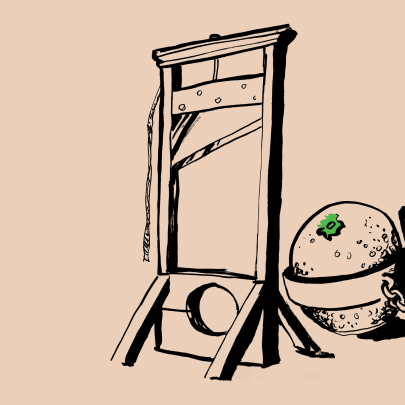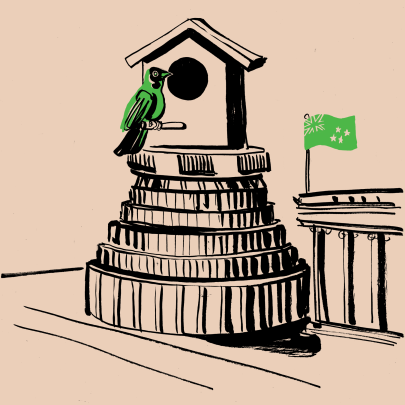Oct 28, 2015 Politics
Desley Simpson at a community meeting in Orakei, 2013. Photo: Simon Young.
What’s National planning with its new Auckland Future ticket for the council?
So the National Party is getting back into Auckland local body politics. It’s tempting to ask, what took them so long?
Let’s not be under any illusions here. The National Party has always been in Auckland local body politics, and so has Labour, and the Greens are there too. The parliamentary parties don’t contest council elections in their own name, but they do contest them. The City Vision ticket is largely a coalition of Labour and the Greens. The old Citizens and Ratepayers was largely the National Party. When Len Brown and John Banks faced off to become first mayor of the super city in 2010, both were “independents”, but Brown was a member of the Labour Party and Banks belonged to National. They fought a proxy campaign for those parties, and everybody knew it.
That said, what happened next was a surprise. Labour and National didn’t line up across the council table and go to war, the way they do in Parliament. Instead, it’s been one of the defining features of Len Brown’s five years as mayor that the major parties have had a very low level of influence on the councillors.
There are no caucuses. There’s a small right-leaning grouping led by Dick Quax, who is in the Act Party, not National, but it doesn’t include several high-profile National Party people, like Christine Fletcher and Cameron Brewer. There is a looser but larger grouping centred on deputy mayor Penny Hulse, who genuinely is an independent. That grouping includes councillors who are or have been members of Labour, National and Act.
The result has been that while the head count of left-leaning and right-leaning councillors is almost 50:50, Len Brown enjoys something closer to two-thirds support from councillors for his major policy planks. And the opposition he does face is just as likely to come from leftists like Mike Lee or Wayne Walker as it is from the right.
Not surprisingly, this has made a number of National Party stalwarts a bit ropable. Watching National Party councillors and their supposed allies voting against each other doesn’t sit well with party members wedded to the discipline of a caucus, especially if it’s helping to keep them out of power.
Sadly for National, though, no one on council has the leadership chops to unite the right. Fletcher, although she’s a former mayor and cabinet minister, is often listened to only by Lee, and that’s an unstable alliance based more on their disdain for Brown than anything else. The Quax grouping, based around complete opposition to Brown’s programme, is very small and isolated. As for Brewer, no one at all listens to him.
If the existing councillors aren’t going to represent National’s interests, then the party will promote a ticket of people who will.
No wonder the National Party has taken matters into its own hands and announced the formation of Auckland Future. If the existing councillors aren’t going to represent the party’s interests, then the party will promote a ticket of people who will. This has a number of implications.
First, it puts pressure on councillors who are in (or close to) the National Party but quite often support Brown – particularly Linda Cooper and Bill Cashmore, and also George Wood and Calum Penrose. Their candidacies for re-election next year are now under threat. For them, it’s kind of like a Tea Party situation – the staunch and more extreme driving out the moderates – except in their case the Tea Party is the actual party.
Second, this is the eastern suburbs (the heart of the heart of the old National Party) reasserting itself. Although National heavyweights like Michelle Boag, Nikki Kaye, Paul Goldsmith and party president Peter Goodfellow have been linked to new group, it’s the influence of Desley Simpson that is most obvious.
Simpson chairs the Orakei local board, whose area stretches east from Epsom, and given the impotence of the Orakei ward councillor, Brewer, that makes her the most powerful local body politician in the eastern suburbs. She’s a party insider, the partner of Goodfellow and the former wife of Coromandel MP Scott Simpson.
Desley Simpson is a charismatic, dynamic and very able leader, a darling of the right, and she should be their mayoral candidate. But she won’t be. Her problem is that she’s one of those people who reeks of entitled privilege, and that gives her profoundly limited appeal to anyone else.
Instead, with Brewer retiring at the 2016 election, Simpson is likely to stand for his ward seat on council. (Her board deputy, Mark Thomas, has announced he will stand for mayor, and while he’s a likeable and also very able politician, it’s hard to see him winning.) But Simpson would win Orakei easily: it’s a true-blue ward and will always return the National Party’s anointed candidate, whatever party name they choose to put on the ticket.
So that’s the third impact: with Simpson heading up a bunch of Auckland Future councillors who are required to accept caucus discipline, National could win control of council.
The fourth impact will be on the mayoralty itself. A council on which Desley Simpson forced other rightist councillors into line would make a centre-left mayor much less powerful than Brown is now, but it would also make the mayoralty itself more appealing to a strong centre-right candidate.
Because, let’s be honest, if National could have found a decent mayoral candidate by now, they would have. Former party president Michelle Boag and others have spent the last five years looking for one, and come up with nobody.
It’s a bit of a surprise. John Palino, who stood last election as a right-wing independent, had a disorganised campaign and no official support from anyone, but even so he gained 100,000 votes (to Brown’s 150,000). It’s a winnable election for the right.
The big question is this: what does Auckland Future want to do? Would a council they control continue to roll out the new city programme, with density done well, better public transport, support for social initiatives and the enablement of developers who also subscribe to the programme? Or will Auckland Future adopt every NIMBY fear in the city as its own, promise no more rates rises, and – as an inevitable consequence of those things – return us to the dark days of unfettered urban sprawl and wild-west town planning?
The answer is not obvious, because in and around Auckland Future there are people clearly identified with both sides of the debate. Does Auckland Future want to run Auckland because, as with National running the country, they believe they are better at it? Or do they want power because they want to change the direction we’re heading in now?
There’s a lot at stake, and an election less than a year away.





